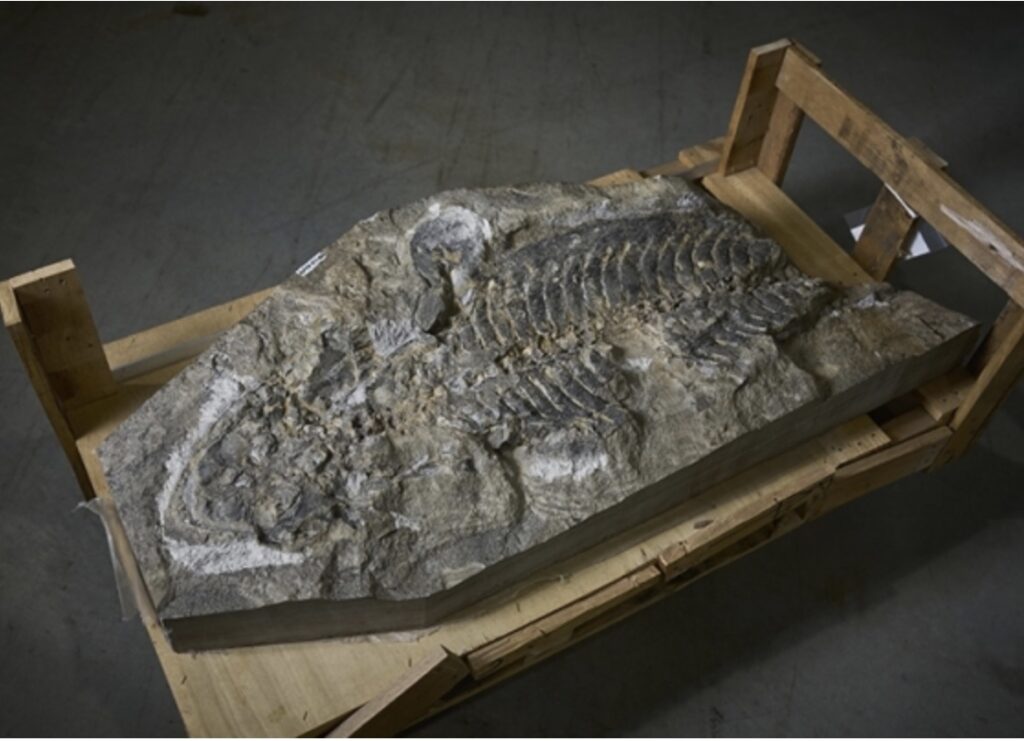Scientists at the University of New South Wales (UNSW), along with the Australian Museum, have officially identified the 240-million-year-old fossil found in a retaining wall in the mid-1990s.
The creature, which was named Arenaerpeton supinatus – meaning “supine sand creeper” – is an amphibian giant-salamander-like creature that was estimated to be 4 feet long and inhabited the rivers in the now-Sydney Basin during the Triassic period (about 251.9 million to 201.3 million years ago), as published in the Journal of Vertebrate Paleontology.
“This fossil is a unique example of a group of extinct animals known as temnospondyls, which lived before and during the time of the dinosaurs,” said lead author Lachlan Hart, a Ph.D. candidate in the School of Biological, Earth and Environmental Sciences (BEES) at UNSW, in a statement.

Hart detailed that the Arenaerpeton’s appearance is similar to the modern Chinese Giant Salamander, especially its head shape. However, the size of its ribs and the soft tissue outline preserved on the fossil “was considerably more heavyset than its living descendants,” Hart said.
“It also had some pretty gnarly teeth, including a pair of fang-like tusks on the roof of its mouth,” he continued.
A retired chicken farmer originally discovered the fossil in rocks obtained from a local quarry that was intended to be used in the construction of a garden retaining wall and was later presented to the Australian Museum in Sydney – wherein, the fossil shows “nearly the entire skeleton, and remarkably, the outlines of its skin.”
“We don’t often find skeletons with the head and body still attached, and the soft tissue preservation is an even rarer occurrence,” Hart said.
Co-author Dr. Matthew McCurry, a Senior Lecturer in UNSW’s School of BEES and Curator of Palaeontology at the Australian Museum shared that the creature is a significant discovery in Australian paleo history.
“This is one of the most important fossils found in New South Wales in the past 30 years, so it is exciting to formally describe it,” says Dr. McCurry. “It represents a key part of Australia’s fossil heritage.”
Other POP! stories that you might like:
‘Too much water can kill you’: Woman dies after drinking 4 bottles in just 20 minutes
‘Ghostlighting’: A new destructive dating trend to look out for
This viral clip from ’90 Day Fiancé’ is sparking discourse over…well, a lot of things
Study shows ‘gaming’ serves as a major stress or anxiety reliever for Filipino Gen Z
‘Blue Beetle’ is not only a superhero movie, it is Ángel Manuel Soto’s ode to the Latin culture